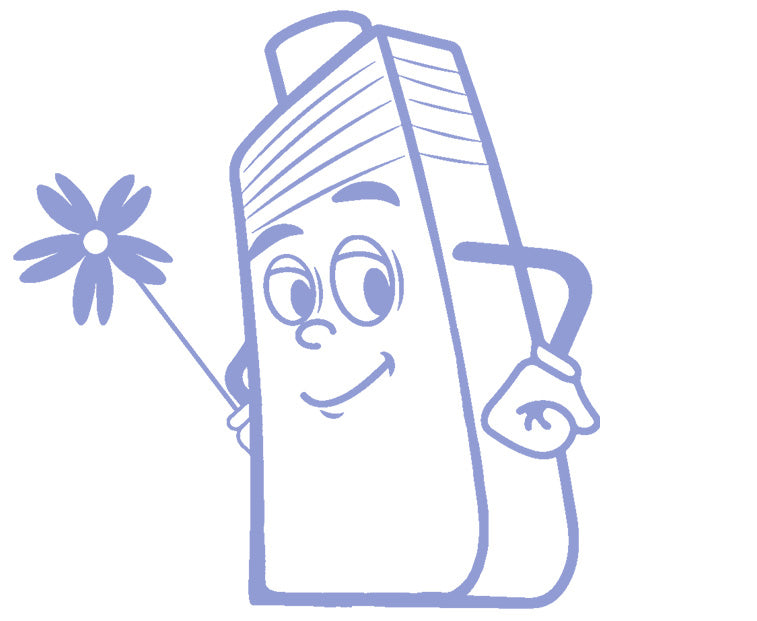Understanding cradle cap causes is the first step to caring for your baby’s scalp—or your own, in the case of cradle cap in adults. With the right cradle cap remedies and a bit of care, you can soothe the scalp, gently remove flakes, and even prevent cradle cap from coming back. In this guide, I’ll walk you through the causes and the best, safe cradle cap treatments to keep your little one’s scalp healthy and comfortable.
Index
What is Cradle Cap?
Cradle cap is a common scalp condition that many babies experience in their first months of life. It usually appears as dry, flaky, or yellowish patches that can look greasy or crusty. While it most often appears on the scalp, cradle cap can sometimes show up in other areas with oil glands, such as the eyebrows, behind the ears, or even the diaper area.

Although it can look a little alarming at first, cradle cap is usually harmless. It doesn’t bother the baby and is not caused by poor hygiene. In most cases, cradle cap will gradually go away on its own. However, using a gentle cradle cap shampoo like Tiny Tangles™ Shampoo & Body Wash or a natural cradle cap treatment such as Tiny Tangles™ Body & Hair Oil can help remove flakes faster, soothe the scalp, and prevent the condition from worsening.
By understanding what cradle cap looks like and how it behaves, you can feel more confident in choosing safe cradle cap remedies and treatments that work for your baby—or even for adults dealing with similar symptoms.
Causes of Cradle Cap
The exact cause of cradle cap isn’t fully known, but several factors can contribute:
- Overproduction of oil (sebum) and build-up of dead skin cells.
- Yeast (Malassezia) overgrowth on the skin.
- Family history or skin conditions such as eczema.
- Hormonal influences from pregnancy affecting the baby’s oil production.
Important points to know:
- Cradle cap is not contagious.
- It’s not caused by poor hygiene.
- Diet or allergies usually do not cause cradle cap.
Understanding these cradle cap causes can help you choose the best cradle cap treatment or natural cradle cap remedies to soothe and care for your baby’s scalp.
How to Get Rid of Cradle Cap
Getting rid of cradle cap is usually straightforward with gentle care and the right products. Here are the most effective treatment options:
Gentle washing with a specialized cradle cap shampoo

Wash the scalp once a day using a gentle, baby-friendly cradle cap shampoo like Tiny Tangles™ Shampoo & Body Wash. This helps remove excess oil and flakes without irritating sensitive skin.
Soft brushing or massaging the scalp
Use a soft baby brush or your fingertips to gently massage the scalp and loosen flakes before washing. This makes shampooing more effective.
Moisturizing with safe oils or lotion

Applying a gentle oil for newborns can help soften stubborn scales. For example, Tiny Tangles™ Body & Hair Oil works beautifully—try applying it before washing and letting it sit for a few minutes so flakes come off easily during shampooing.
Medicated options (if recommended by a doctor)
If gentle washing and oils don’t work, a doctor may suggest medicated treatments. Be careful not to use adult products, as they can be too harsh for sensitive baby skin. Medical advice is also useful to rule out other potential causes if the condition worsens.
By combining gentle washing, soft brushing, and moisturizing with a natural cradle cap treatment, you can effectively get rid of cradle cap while keeping your baby’s scalp healthy and comfortable.
Best Shampoos and Treatments for Cradle Cap
When it comes to caring for cradle cap, choosing the right products makes all the difference. Gentle, nourishing formulas can help remove flakes, soothe the scalp, and prevent cradle cap from returning. Here are some of the best options:
Tiny Tangles™ Shampoo & Body Wash
- Gentle and Allergy Certified: Safe for babies’ delicate skin, free from sulfates, parabens, silicones, perfumes, and colorants.
- Organic Nourishment: Enriched with aloe vera, bilberry, açai, pomegranate, grapefruit, and nettle to soothe, hydrate, and protect the scalp and hair.
- Softens and Moisturizes: Conditioning formula reduces tangles, making hair soft, shiny, and easy to comb.
- Convenient for Bath Time: Combines baby shampoo and body wash in one, making your routine simpler and more enjoyable.
This cradle cap shampoo is ideal for gently cleansing and hydrating the scalp while helping loosen flakes. Using it daily can support a faster and more comfortable cradle cap treatment.
Tiny Tangles™ Body & Hair Oil
- Natural and Organic Certified: Includes a blend of olive, sunflower, jojoba, baobab, argan, and açai oils plus vitamin E.
- Soothes and Softens: Softens scales before shampooing, helping flakes come off easily, while nourishing the scalp and hair.
- Versatile Use: Can be used before or after bathing, and is also suitable for dry skin, diaper rash, or general moisturizing.
- Lightweight and Absorbing: Provides care without leaving a greasy residue.
For cradle cap, apply this baby oil to the scalp before washing. Let it sit for a few minutes to soften flakes, then use a baby shampoo to gently cleanse and remove the loosened scales.
Other Cradle Cap Remedies
- Soft baby brushes or combs to gently massage the scalp.
- Natural oils like coconut, jojoba, olive or a baby lotion if Tiny Tangles™ products are not available.
- Medicated options only if recommended by a doctor, to ensure safety for sensitive skin.
Combining a gentle cradle cap shampoo with a nourishing hair and body oil is often the best cradle cap treatment. These natural remedies for cradle cap help remove flakes, soothe irritation, and keep the scalp healthy—making bath time a more comfortable and stress-free experience for both baby and parent.
Cradle Cap in Adults: Is It the Same?
Cradle cap in adults is often actually seborrheic dermatitis—a chronic form of scalp inflammation that causes flaking, redness, and greasy-yellow scales, particularly in oily areas like the scalp, hairline, eyebrows, and even chest.
One of the main underlying causes is the overgrowth of the yeast Malassezia (a scalp fungus) on oily, sebum-rich skin. So while baby cradle cap and adult seborrheic dermatitis share many traits (oil, dead cells, yeast), adult cases tend to be more persistent and may require ongoing care.
Treatment Options for Adults
- Use an antifungal shampoo designed for adult scalp issues. Instant Relief™ Dandruff Shampoo is a targeted anti-dandruff shampoo that helps combat flaking and irritation with a natural, antifungal formula.
- An antifungal scalp spray or serum, such as Instant Relief™ Scalp Spray, can complement shampoo use, soothing the scalp and helping manage flare-ups.
- Medicated shampoos: For severe cases, shampoos with ketoconazole or selenium disulfide may be recommended.
A Friendly Reminder
Even if it looks like cradle cap, don’t self-diagnose. If the condition worsens, becomes painful, bleeds, or does not respond to treatment, it’s wise to consult a dermatologist. Adult cradle cap cases can hide other conditions, so proper diagnosis matters.
How to Prevent Cradle Cap from Returning
- Gentle scalp care: Regular, mild cleansing helps maintain a balanced scalp. Avoid shampoos or body washes with harsh chemicals, sulfates, or strong fragrances, which can irritate the scalp and trigger cradle cap to return.
- Moisture balance: Keep the scalp soft and hydrated. Lightweight, natural oils or lotions can calm dryness and support a healthy skin barrier.
- Avoid irritation: Scratching or vigorous brushing can trigger flare-ups. Use soft brushes and gentle motions.
- Patience is key: Remember that cradle cap often improves on its own over time and usually disappears completely before your baby turns 12 months old. Gentle, consistent care can help speed up the process and keep the scalp comfortable in the meantime.
FAQs About Cradle Cap
-
What is cradle cap and what causes it?
Cradle cap is a common condition that appears as greasy, yellowish flakes on a baby’s scalp. The cause of cradle cap is thought to be a combination of factors, including excess oil (sebum) production, a build-up of dead skin cells, and sometimes the overgrowth of a natural yeast called Malassezia.
-
How can I get rid of cradle cap?
You can get rid of cradle cap by washing your baby’s scalp daily with a gentle cradle cap shampoo, such as Tiny Tangles™ Shampoo & Body Wash, and massaging the area softly to loosen flakes. Applying a natural oil—like Tiny Tangles™ Body & Hair Oil—before shampooing can help soften the scales so they come off more easily. Most cases clear up with regular, gentle care.
-
Are there natural remedies for cradle cap?
Yes! Natural remedies for cradle cap include applying mild oils such as jojoba or sunflower oil to soften flakes before washing. The Tiny Tangles™ Body & Hair Oil is an excellent natural cradle cap remedy because it’s made with a blend of organic oils that hydrate and protect the scalp.
-
Can cradle cap occur in adults?
What’s known as cradle cap in adults is typically seborrheic dermatitis. It has similar symptoms (flaking, itchiness, and oily patches) but is often linked to an overgrowth of yeast and excess oil production. Adult cradle cap can be managed with targeted antifungal products such as Instant Relief™ Dandruff Shampoo and Instant Relief™ Scalp Spray for lasting comfort and balance.
-
How long does cradle cap last?
Most babies outgrow cradle cap naturally before 12 months of age. Gentle washing, moisturizing, and avoiding harsh products can help speed up the process. If the condition persists or spreads, it’s a good idea to speak with a healthcare professional.
Cradle cap may look concerning, but it’s a common and harmless condition that’s easy to manage with the right care. Understanding cradle cap causes helps you choose the best cradle cap treatment—whether that means using a gentle cradle cap shampoo or trying natural cradle cap remedies.
For most babies, a consistent routine with mild, natural products is all it takes to get rid of cradle cap and keep the scalp healthy. The Tiny Tangles™ Shampoo & Body Wash and Body & Hair Oil offer the perfect natural cradle cap treatment—nourishing, soothing, and gentle enough for even the most sensitive skin.
And while cradle cap in adults can be a bit more persistent, it can also be managed with targeted treatments such as the Instant Relief™ Dandruff Shampoo and Instant Relief™ Scalp Spray, which calm irritation and restore scalp balance.
With the right care and a few gentle products, you can easily treat and prevent cradle cap—naturally and effectively.


















































